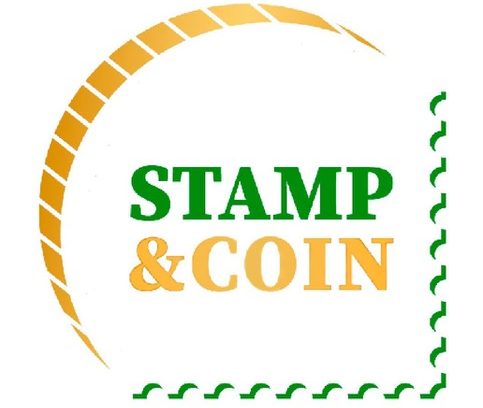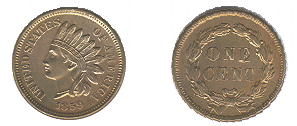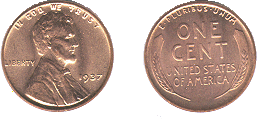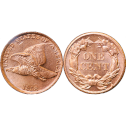1859-1909 Indian Cent
The Indian Cent was designed by James B. Longacre. The coin has a weight of 4.67 grams, a diameter of 19mm, an a plain rim. From 1859 to the middle of 1964 the Indian Cent were 88% copper and 12% nickel which gave them a light color, same as the Flying Eagle Cent. From midway through 1864 to 1909 the composition was changed that of Bronze: 95% Copper and a 5% alloy of Zinc and Tin. Like the Flying Eagle, the early Indian Cent was sometimes called a ‘white cent’, because of its color, and ‘nickel cent’ or ‘nick’, stemming from their composition (remember, the first five cent piece to be called a nickel was seven years later in 1866!). All specimens were struck in Philadelphia except for the last two years, 1908 and 1909, which were minted in both Philadelphia and San Francisco.
Free shipping on orders over $50!
- Satisfaction Guaranteed
- No Hassle Refunds
- Secure Payments
Description
The first Indian Cent was issued in 1859. The image on the obverse is however not an actual Indian! It is, in fact, Liberty wearing an Indian headdress. The reverse of the 1859 depicted a laurel wreath around the words ‘one cent’. This design was changed the next year to an oak wreath and shield with the same text.
Grading Standard for the Indian Cent
GOOD: OBVERSE: Entire design well worn with very little detail remaining. Legend and date are weak but visible. REVERSE: Wreath is worn flat but completely outlined. Bow merges with wreath. VERY GOOD: OBVERSE: Outline of feather ends show but some are smooth. Legend and date are visible. At least three letters in LIBERTY show clearly, but any combination of two full letters and parts of two others are sufficient. REVERSE: Slight detail in wreath shows, but the top is worn smooth. Very little outline showing in the bow. FINE: OBVERSE: One-quarter of details show in the hair. Ribbon is worn smooth. LIBERTY shows clearly with no letter missing. REVERSE: Some details visible in the wreath and bow. Tops of leaves are worn smooth. VERY FINE: OBVERSE: Headdress shows considerable flatness. Nearly half of the details still show in the hair and on ribbon. Head slightly worn but bold. REVERSE: Leaves and bow are almost fully detailed. EXTREMELY FINE: OBVERSE: Feathers well defined and LIBERTY is bold. Wear shows on the hair above ear, curl to right of ribbon and on the ribbon end. Most of the diamond design shows plainly. REVERSE: High points of leaves and bow are worn.



